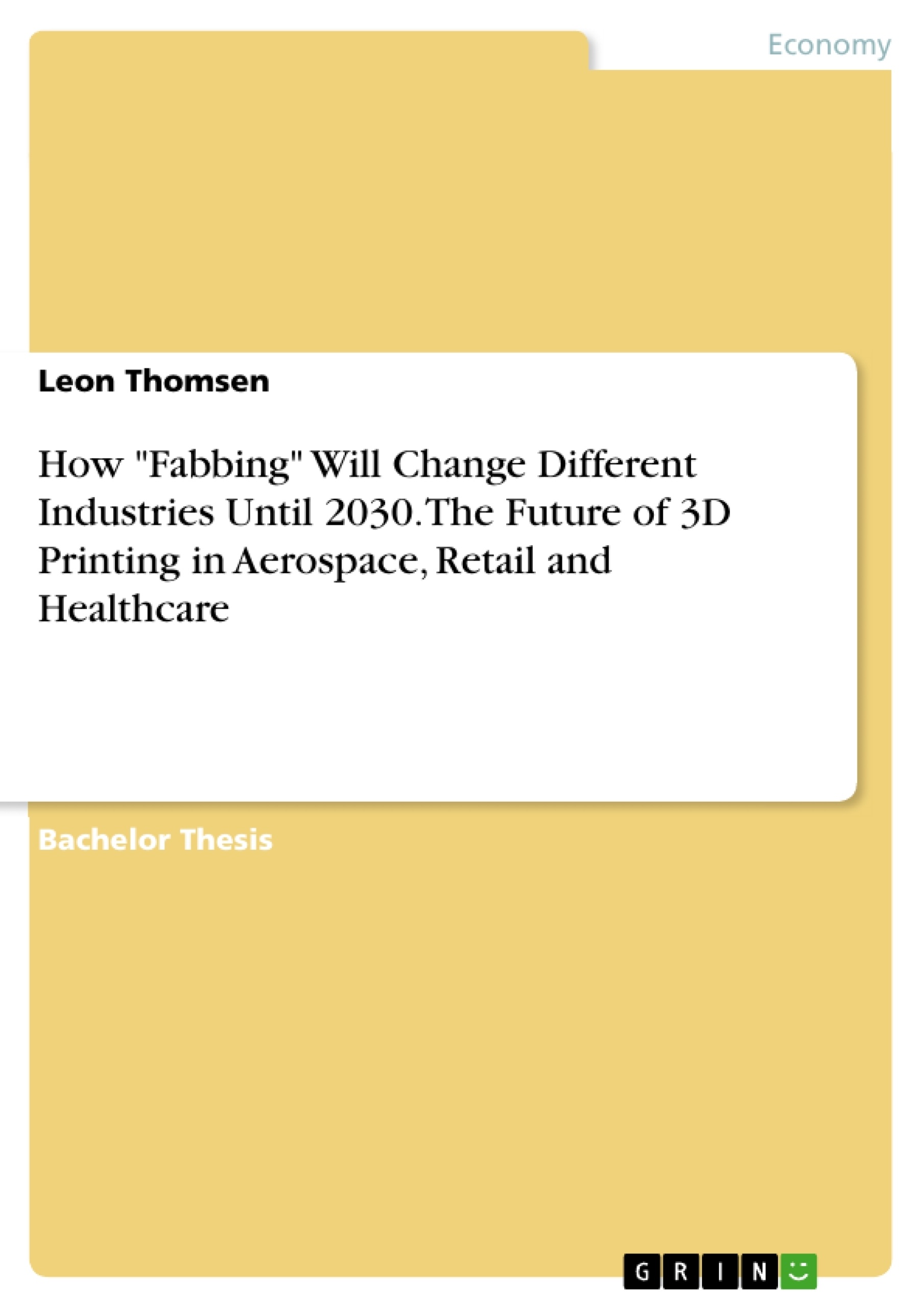The aim of this paper is to investigate the impact of fabbing on various industries to reveal how these industries could potentially be transformed in the next 15 years.
First, the subsequent chapters two and three cover the theoretical fundamentals of this paper. In doing so, chapter two addresses additive manufacturing, which focuses on its definition and procedure as well as fabbing, which is covered to the most detailed extent as it is the additive manufacturing's main field of application.
As additive manufacturing is often classified a disruptive technology, chapter three discusses Christensen's theory as well as recommendations on how to deal with disruptive innovations.
Based on these fundamentals, chapter four starts with the design of a scorecard, which matches various industries with a score from one to five to each of the most relevant factors that have to be considered when evaluating the impact of fabbing on the respective industries. Afterwards, the three industries with the highest overall score are selected for further investigation. This investigation addresses the impact of fabbing on that particular industry and will be based on theknowledge, valuation and expectations of experts. Furthermore, an exemplary case study of one enterprise from each industry is conducted to showcase actual changes within a company.
The paper then concludes with a summary and an outlook on necessary further research.
Inhaltsverzeichnis (Table of Contents)
- Introduction
- Problem Definition and Objective
- Course of the Investigation
- Additive Manufacturing
- Definition and Procedure
- Fabbing
- Definition and Development
- Mechanics of Fabbing
- Current Market Environment
- Advantages to Traditional Manufacturing
- Disruptive Innovation and Technology
- Classification of a Disruptive Innovation
- Definition of a Disruptive Innovation
- Handling of a Disruptive Technology
- Impact of Fabbing on Different Industries
- Development of a Scorecard for Impact Evaluation
- Evaluation of Impact on Different Industries
- Concluding Remarks
- Impact of Fabbing on Selected Industries
- Impact of Fabbing on the Aerospace Industry
- Impact Case Study on the Aerospace Industry
- Impact of Fabbing on the Retail Industry
- Impact Case Study on the Retail Industry
- Impact of Fabbing on the Healthcare Industry
- Impact Case Study on the Healthcare Industry
- Discussion and Conclusion
Zielsetzung und Themenschwerpunkte (Objectives and Key Themes)
This thesis examines the impact of "fabbing," a form of additive manufacturing, on various industries. It aims to understand how this disruptive technology will shape the future of production and innovation. The study focuses on the definition and development of fabbing, its advantages over traditional manufacturing, and its potential to transform different industries. The research also explores the concept of disruptive innovation and its implications for businesses.
- The definition and development of fabbing
- The advantages of fabbing over traditional manufacturing
- The impact of fabbing on different industries, including aerospace, retail, and healthcare
- The concept of disruptive innovation and its role in the adoption of fabbing
- The future implications of fabbing for businesses and industries
Zusammenfassung der Kapitel (Chapter Summaries)
The thesis begins with an introduction that defines the problem and sets forth the objectives of the research. Chapter 2 provides an overview of additive manufacturing, focusing on the definition, procedures, and advantages of fabbing. Chapter 3 delves into the concept of disruptive innovation and its application to fabbing. Chapter 4 analyzes the impact of fabbing on various industries, using a developed scorecard to evaluate the potential for disruption. Chapter 5 examines the impact of fabbing on specific industries, including aerospace, retail, and healthcare, with case studies to illustrate the effects. The thesis concludes with a discussion of the findings and their implications for the future.
Schlüsselwörter (Keywords)
The primary keywords and focus topics of this thesis include additive manufacturing, fabbing, disruptive innovation, technology adoption, industry impact, aerospace, retail, healthcare, and future implications. These terms encapsulate the core concepts and research focuses of the study, highlighting the transformative potential of fabbing in shaping the future of production and innovation.
- Quote paper
- Leon Thomsen (Author), 2015, How "Fabbing" Will Change Different Industries Until 2030. The Future of 3D Printing in Aerospace, Retail and Healthcare, Munich, GRIN Verlag, https://www.grin.com/document/304122




